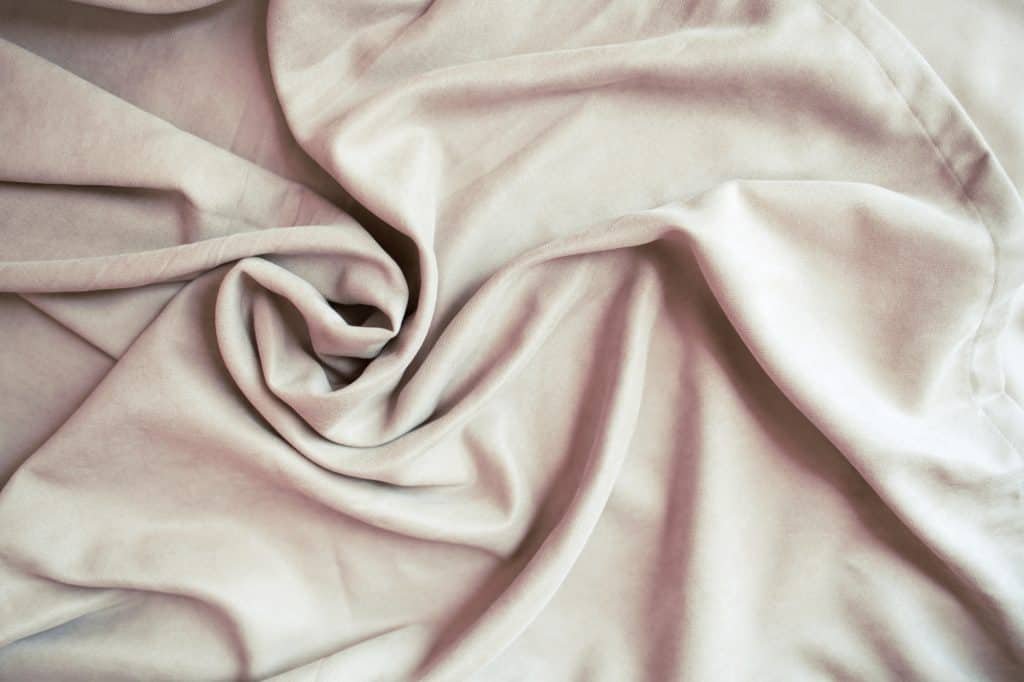Suede, velvet, and velour are all beautiful fabrics that have been around for hundreds of years. While they have many similarities in how they look and feel, there are some differences that make one better than the others for specific projects.
Suede, velvet, and velour differ in the material type used to produce the fabrics. While velvet is woven with a silk-based fabric, velour is a synthetic knit fabric composed of cotton and polyester. Suede, on the other hand, is a type of soft natural leather made from animal skin.
In this article, I will go into great detail about the differences between suede, velvet, and velour. We’ll also get to what makes certain projects benefit from a specific type of fabric.
Are Velvet and Suede the Same Thing?
Velvet and suede are both soft, luxurious fabrics often used in fashion and home decor. Because of their similarities, they are sometimes mistaken for one another.
Velvet and suede are not the same thing. Velvet is a woven fabric made of cotton and polyester, while suede is made of soft leather coming from the underside of animal skin.
The Differences Between Suede and Velvet
Velvet is a fabric composed of silk and cotton. The material is evenly woven together in short, dense strands. The dense weave strategy of the tufted fabric is what makes velvet so soft and smooth.
On the other hand, suede is made from the soft underbellies of various animals, such as lambs, goats, and calves. The underside of animals is very soft and flexible. This makes it the perfect material to use for certain kinds of shoes, furniture, and fashion pieces. (Source: Wikidiff).
The process of making suede is more complex than making velvet. Suede is split leather, meaning that it is separated from the outer skin layer, leaving solely the inner layer.
Because of this process, suede is usually more expensive than velvet. While suede can cost around $30-$40 per yard, velvet usually costs about $6 per yard, depending on its quality. Some pieces of velvet, such as the kind made entirely of silk, can be upwards of $100 (Source: Asking Lot).
Suede is a very delicate fabric and can be challenging to take care of. It is easy to scuff and stain. While velvet can be machine-washed, suede needs to be dry cleaned.
Velvet
- Fabric weaved from silk and cotton
- Usually cheaper
- Easy to get
- Easier to take care of
- More durable
Suede
- Underbelly of animals
- Usually more expensive
- Harder to get
- Harder to take care of
- Less durable

Which Is Better – Suede or Velvet?
Now that we’ve run through the key differences between suede and velvet, it’s time to look at which one is better.
In general, velvet is better because it is cheaper, more durable, and easier to take care of. However, your ideal choice of fabric depends on what it is being used for.
Read on to learn about which material is better for specific uses.
Furniture
You want your furniture to be comfortable and easy to clean.
While suede is very soft and comfortable, it is not as easy to clean as velvet. If you have pets or kids, you will most likely be cleaning messes off your furniture. With suede, these messes will make stains much more likely.
As far as how good they look, it really depends on your style. Velvet has a sleeker and classier look, while suede is more minimalist and cozy.
Think about how you want to decorate your interior. This could give you your answer about which material will match better.
Shoes
Velvet shoes usually have a different use than suede shoes. Overall, suede is more formal. This being said, the ideal material for a shoe really depends on the use you’ll give them.
If you want a more formal shoe, suede may be the way to go. However, if you are looking for an everyday shoe, velvet might be a better pick.
One thing is for sure- your shoes need to be durable. They catch dirt easily and are often knocked into stuff on the ground as you walk.
Suede shoes are notoriously delicate and easy to scuff or stain. This is why they are usually worn to formal events and not outside or in bad weather. Once stained, it isn’t easy to clean them.
On the other hand, velvet shoes are more durable handle better being knocked into things. They are also much easier to clean.
However, velvet shoes may be difficult to come across. Velvet is not as commonly used on shoes as suede is.
Clothing
This one depends on your personal style. Velvet and suede both have their designated space in the world of fashion.
If you want a clothing item that can be worn in bad weather and is machine washable, velvet is the way to go.
However, despite suede’s disadvantages, the soft material gives your outfit a classy touch that velvet can’t quite imitate.
What’s the Difference Between Suede and Velour?
Velour is a fabric with a similar soft feeling to suede.
The difference between suede and velour is that suede is made from the underbelly of animals, while velour is a synthetic fabric similar to velvet.
It is much easier to get velour mixed up with velvet.

What’s the Difference Between Velvet and Velour?
Velvet and velour both have a similar look and feel. They also share resemblances in the way they’re made.
The difference between velvet and velour is that velour is made of much shorter piles of fabric, making it less soft and full than velvet. Velour is partly made of synthetic materials such as polyester, whereas velvet is usually made from silk and cotton.
The two materials also differ in their weaving patterns. Whereas velvet is simultaneously woven with two thick fibers, velour is woven into loops, which are then cut off. This step causes the material to lose the shine that velvet is known for. (Source: Canvas)
Picture velour a lower-quality velvet. It lacks the rich silk that velvet is made from, causing it to be less soft, though usually a much cheaper fabric.
Velour is known in the fashion world for being the cheaper version of velvet. However, this has not stopped it from being brought into trends. You may recognize the fabric from the Juicy Couture tracksuits that became popular in the early 2000s.
Conclusion
I hope you found this article helpful in deciding what material is suitable for you. As you can see, each material has its own deserved spot in the fashion world. The important thing is not to get them confused.
Velvet is more versatile, but it gives off a less formal feel. Velour doesn’t look as good as velvet, but it might be worth looking into if you’re short on money.

